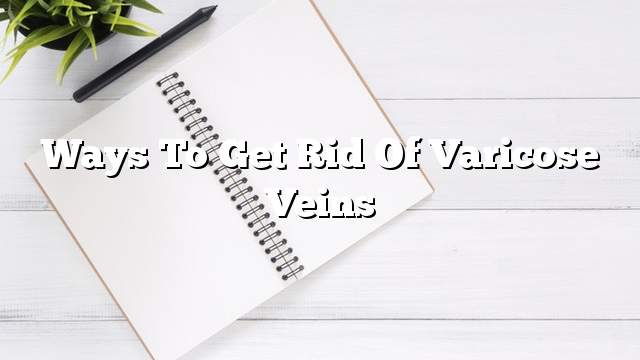The vein: It is a blood vessel that transfers blood from the body’s various organs towards the heart, where it acts contrary to the direction of the artery from the heart to the organs.
Varicose disease
It is a disorder in the size of the veins, leading to an increase in size and length, and may be in the legs, or testes, or the woman’s pelvis.
Varicose veins
Is a defect in the proteins that make up the walls of the veins, especially collagen, which weaken them so as not to absorb blood pressure paid, leading to the deformity of those veins.
Treatment of varicose veins
- Do not sit or stand for long periods without moving the feet, where the movement of muscles help to push the blood from the veins by clicking on them.
- Weight loss, exercise, and lifting of the feet when sleeping at a higher level of the body.
- Close the superficial surface veins with a solution where this process is called injection.
- Close the veins completely using the laser.
- Injections using ultrasound to identify veins.
Varicose veins
Is that the deformity occurs in the form of veins in the scrotum of the testicle, which in many cases leads to infertility in men.
Causes of varicose veins
- The presence of coagulation in one of the veins near the testis or obstruction of the vein that reaches the testis.
- Problems in sperm ducts in the testis.
Treatment of Varicose Veins
- Prevention of the testicles not to expose the heat, the temperature of the scrotum containing the testicles should be less than two degrees Celsius below the body temperature by moving away from the sauna rooms, not using heated chairs, not putting laptops on the thighs when working on them, etc.
- Surgical intervention to treat the vein in which the deformity.
Varicose veins
Is the occurrence of abnormalities in the veins in the pelvic area of the female, causing the high pressure of these veins, and the blood flow in them.
Causes of varicose veins
- Hormonal causes The female hormone estrogen weakens the structure of the veins, where attention must be paid to the sources taken from some drugs such as birth control pills.
- Pelvic and uterine congestion due to pregnancy.
Treatment of varicose veins
- The use of antihistamines such as progesterone, which increases the strength of the wall structure of the veins.
- Surgical intervention using a telescope to connect the dilated veins.
- Syringes using a therapeutic catheter to close the veins.
